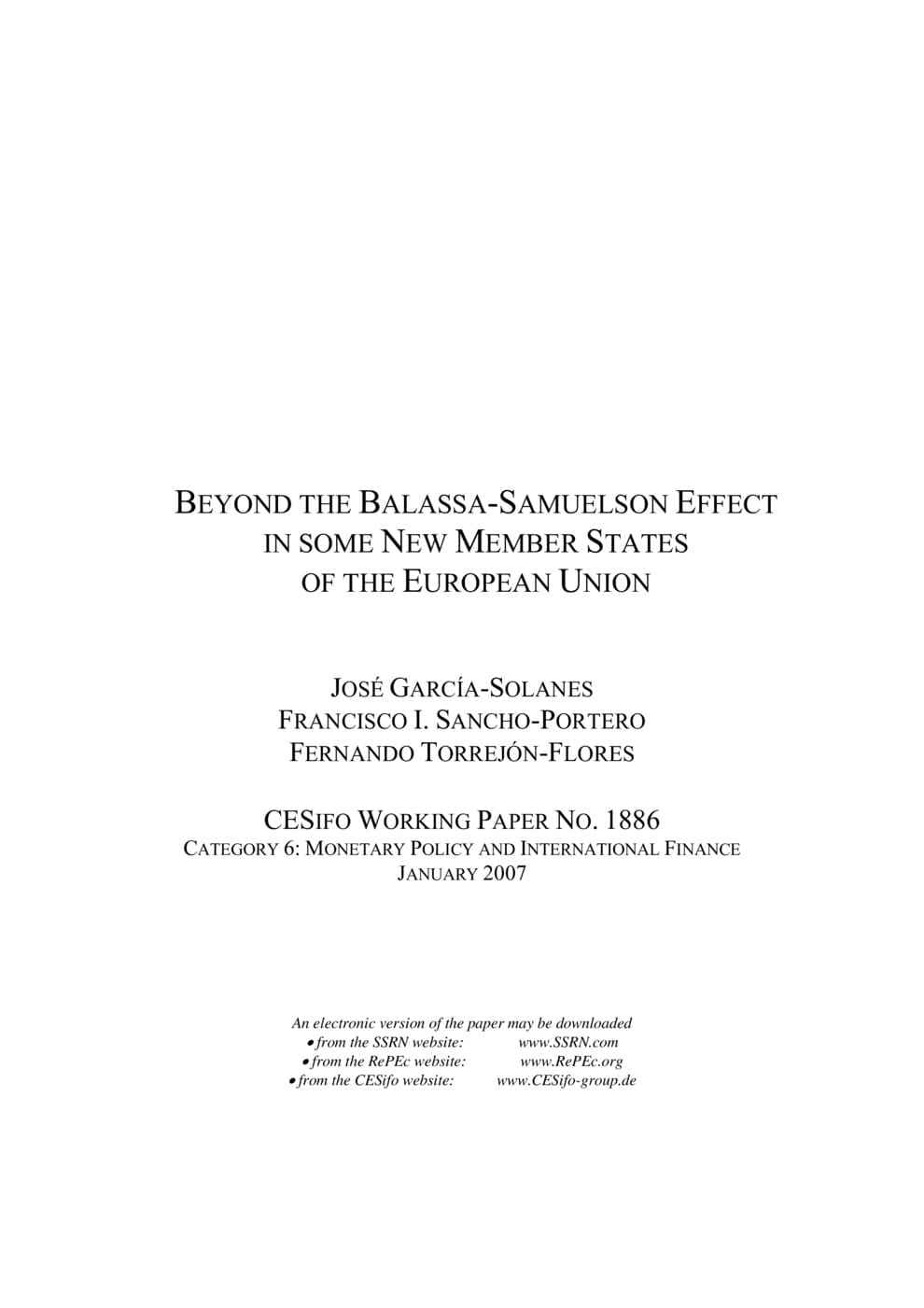Beyond the Salassa-Samuelson Effect in some New Member States of the European Union
CESifo, Munich, 2007
CESifo Working Paper No. 1886

This paper analyses the Balassa and Samuelson hypothesis in two groups of European countries: six New Member States (NMS) and six advanced EU-15 economies. It is found that the second stage of the hypothesis, which relates relative sector prices with the real exchange rate, does not hold anywhere. In the NMS the main reasons are increased demand for domestic tradables stemming from positive differentials in economic growth, probably coupled with quality improvements in domestic tradable goods. In the EU-15, the explanatory factor is segmentation between national markets of tradables, caused by transportation costs, non-tariff barriers and imperfect competition between firms.
Monetary Policy and International Finance